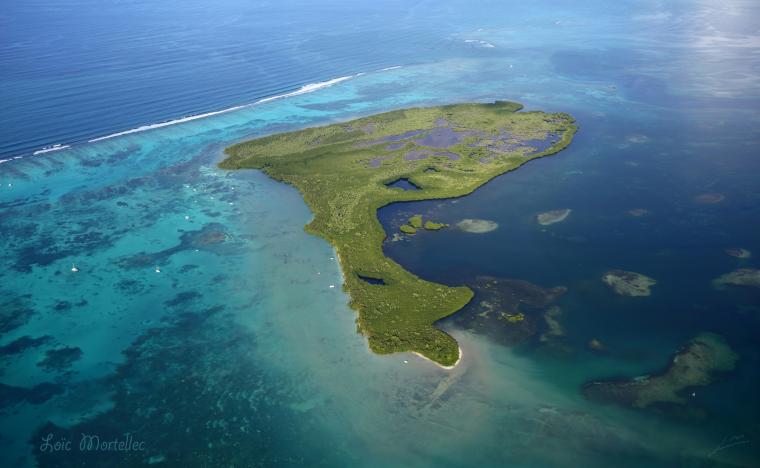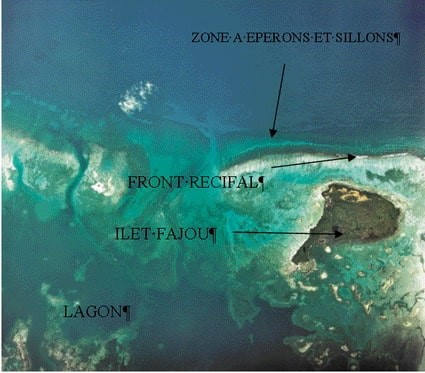
Fajou islands
Description
The islet of Fajou is the largest of Grand Cul-de-Sac Marin, located to the east, it covers an
area of 119.5 hectares. About 6 km north of the mouth of the Rivière Salée and about 6 km
west of the Vieux-Bourg cove, it emerges from a shallow area limited to the north by the coral
reef. Administratively belonging to the municipality of Morne-à-l’eau, it is subject to protection
for its exuberant fauna and flora, and the coastal conservatory and the ONF (National Forestry
Office) look after this jewel of the Grand Cul-de-Sac Marin’s nature reserve. Formed almost
entirely by mangroves, it is surrounded by white sand and marine seagrass belonging to the
genus Thalassia.
Inhabited in the mid-19th century, it housed several compost and lime factories coral-based
(together with certain shells). At one time the islet was also home to more than 300 head of
cattle.
Biodiversity
Mangrove forest, the Fajou islet has peat and clay soils, where the vegetation remains typical
of the area (mangrove biome). To the north and southwest, sandy soils are home to xerophytic
vegetation. The islet is also home to birds, such as frigatebirds (Fregata sp.), an endemic subspecies of great egret (Egrette Alba), mangrove rail (Rallus longirostris), waders or shorebirds (which
belong to the order Charadriiformes); sea turtles, including the hawksbill sea turtle
(Eretmochelys imbricata), which breeds there; reptiles; crustaceans; and other invertebrates.
Various species of crabs live in freedom on its beaches, such as the blue land crab (Cardisoma
guanhumi), the sand fiddler crab (Uca pugilator), the mud crab or mangrove crab (Scylla
serrata) and the Chesapeake blue crab (Callinectes sapidus).
Although the presence of alien mammalian species*, such as mongoose, rats and mice, poses
a significant threat to turtle eggs, several eradication attempts have been made and the results
have been quite convincing.
Ecotourism potential
Various types of marine ecotourism excursions are offered to discover this islet in compliance
with coastal protection regulations. It is a great place to go sea trek, kayaking or catamaraning.


Sources :
“Site Ramsar: 642 – Grand Cul-de-Sac Marin de la Guadeloupe Fiche descriptive Ramsar avril 2012” https://rsis.ramsar.org/RISapp/files/48245229/documents/FR642_lit160825.pdf
“Ilet Fajou” https://www.conservatoire-du-littoral.fr/siteLittoral/653/28-ilet-fajou-971_guadeloupe.htm
Informations
-
Types de milieux
Îlets -
Location
Guadeloupe (Morne-à-l'eau)
